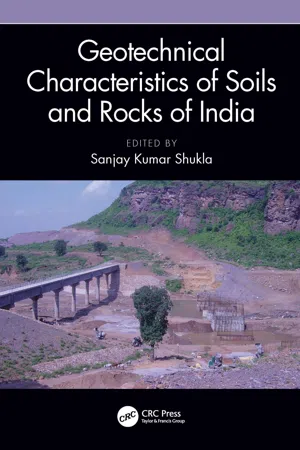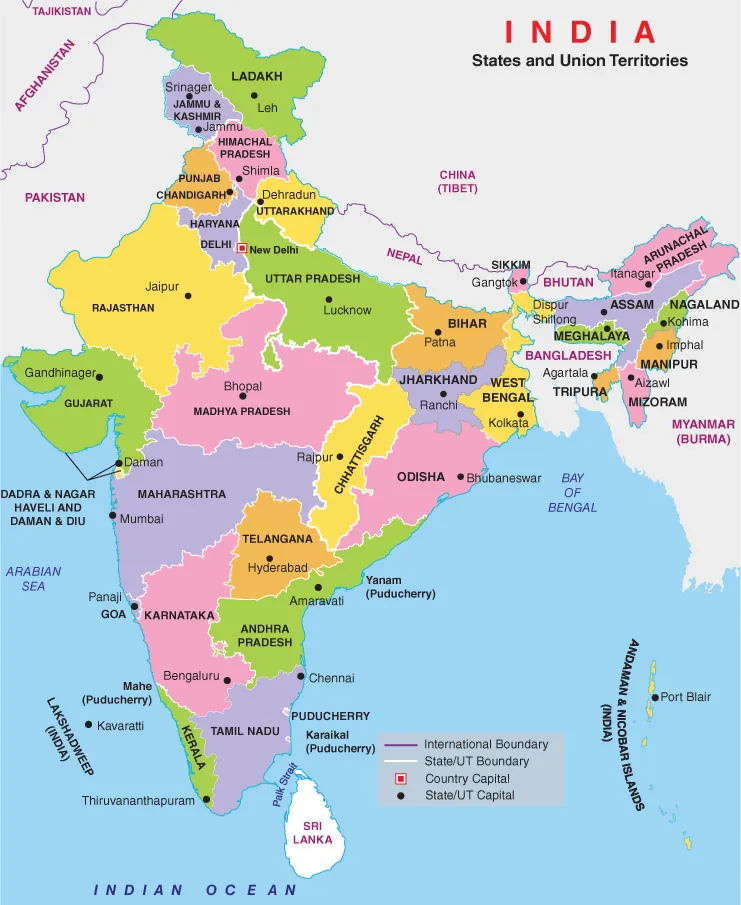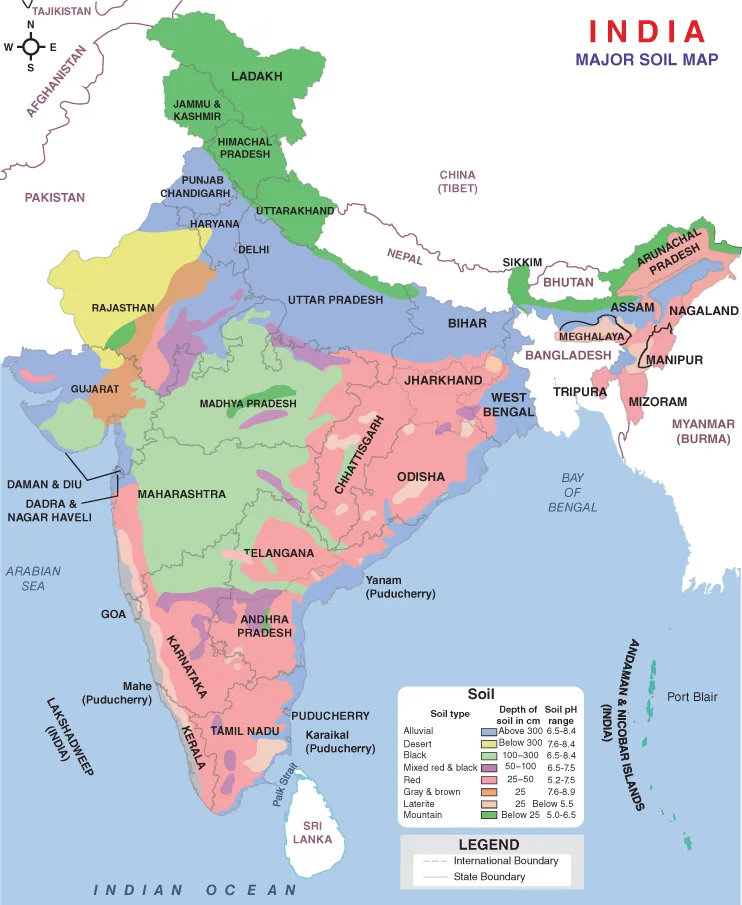
- 726 pages
- English
- ePUB (mobile friendly)
- Available on iOS & Android
Geotechnical Characteristics of Soils and Rocks of India
About this book
This book presents mainly the geotechnical details of geomaterials (soils and rocks) found in all the 36 states and union territories of India. There are 37 chapters in this book. Chapter 1 provides an overview of geomaterials, focusing on their engineering properties as determined based on the project site investigations and laboratory/field tests; this will help readers understand the technical details explained throughout the book, with each chapter dealing with geomaterials of one state/union territory only.
Each chapter, contributed by a team of authors, follows a common template with the following sections: introduction, major types of soils and rocks, properties of soils and rocks, use of soils and rocks as construction materials, foundation and other geotechnical structures, other geomaterials, natural hazards, case studies and field tests, geoenvironmental impact on soils and rocks, concluding remarks and references.
All the chapters cover highly practical information and technical data for application in ground infrastructure projects, including foundations of structures (buildings, towers, tanks, machines and so on), highway, railway and airport pavements, embankments, retaining structures/walls, dams, reservoirs, canals and ponds, and landfills and tunnels. These details are also highly useful for professionals dealing with mining, oil and gas projects and agricultural and aquacultural engineering projects. Although this book covers the Indian ground characteristics, the information provided can be helpful in some suitable forms to the professionals of other countries having similar ground conditions and applications.
Frequently asked questions
- Essential is ideal for learners and professionals who enjoy exploring a wide range of subjects. Access the Essential Library with 800,000+ trusted titles and best-sellers across business, personal growth, and the humanities. Includes unlimited reading time and Standard Read Aloud voice.
- Complete: Perfect for advanced learners and researchers needing full, unrestricted access. Unlock 1.4M+ books across hundreds of subjects, including academic and specialized titles. The Complete Plan also includes advanced features like Premium Read Aloud and Research Assistant.
Please note we cannot support devices running on iOS 13 and Android 7 or earlier. Learn more about using the app.
Information
Chapter 1 Introduction
CONTENTS
1.1 Soil and rock


1.2 India and its states and union territories

- Andhra Pradesh
- Arunachal Pradesh
- Assam
- Bihar
- Chhattisgarh
- Goa
- Gujarat
- Haryana
- Himachal Pradesh
- Jharkhand
- Karnataka
- Kerala
- Madhya Pradesh
- Maharashtra
- Manipur
- Meghalaya
- Mizoram
- Nagaland
- Odisha
- Punjab
- Rajasthan
- Sikkim
- Tamil Nadu
- Telangana
- Tripura
- Uttarakhand
- Uttar Pradesh
- West Bengal
- Andaman and Nicobar Islands
- Chandigarh
- Daman and Diu and Dadar and Nagar Haveli
- Delhi
- Jammu and Kashmir
- Ladakh
- Lakshadweep
- Puducherry

1.3 Structure and use of this book
Table of contents
- Cover
- Half Title
- Title Page
- Copyright Page
- Table of Contents
- Preface
- About the editor
- List of contributors
- 1 Introduction
- 2 Andaman and Nicobar Islands
- 3 Andhra Pradesh
- 4 Arunachal Pradesh
- 5 Assam
- 6 Bihar
- 7 Chandigarh
- 8 Chhattisgarh
- 9 Dadra and Nagar Haveli and Daman and Diu
- 10 Delhi
- 11 Goa
- 12 Gujarat
- 13 Haryana
- 14 Himachal Pradesh
- 15 Jammu and Kashmir
- 16 Jharkhand
- 17 Karnataka
- 18 Kerala
- 19 Ladakh
- 20 Lakshadweep
- 21 Madhya Pradesh
- 22 Maharashtra
- 23 Manipur
- 24 Meghalaya
- 25 Mizoram
- 26 Nagaland
- 27 Odisha
- 28 Puducherry
- 29 Punjab
- 30 Rajasthan
- 31 Sikkim
- 32 Tamil Nadu
- 33 Telangana
- 34 Tripura
- 35 Uttarakhand
- 36 Uttar Pradesh
- 37 West Bengal
- Index